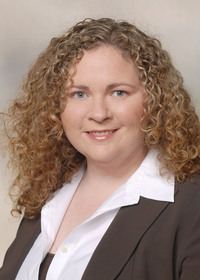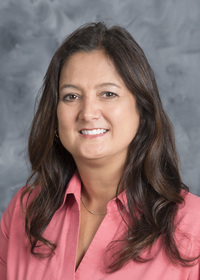Disaster Relief: Drinking Water in an Emergency
Many kinds of emergencies can affect the safety of your drinking water. Natural disasters such as floods, tornadoes, hurricanes, ice storms, and other emergencies may cut off your drinking water supply with no warning. Planning for this ensures you have safe drinking water in such an emergency.
Why Do I Need an Emergency Plan?
A person can survive several days or even weeks without food but only a short time without water. In a natural disaster or other unforeseen situation, your drinking water can quickly, and without notice, become unsafe to drink. If you are prepared before the disaster occurs, you can be sure you will have safe drinking water in an emergency. Remember, it’s too late to make plans after the emergency!
How Much Water Should I Store?
To plan for your emergency water needs, keep in mind that you may be without electrical power and other basic services for several days. In normal weather, a typically active person needs at least one-half gallon of water a day just for drinking. That doesn’t include the extra water needed for cooking, washing, brushing teeth, and washing clothes.
To be safe, store 1 gallon of water per person per day, or at least 6 gallons of water per person per week. Some of the body’s need for liquids can be met by using juices from canned fruits and vegetables. As a rule, store at least 1 week’s emergency water supply for each member of your family.
Be mindful that children, pregnant women, people who are ill, and people living in hot climates may require more water. In addition, don’t forget about pets! Cats and dogs need approximately 1 gallon of water for every 3 days. Also, caffeinated drinks and alcohol can dehydrate the body and increase the need for drinking water, so keep this in mind during an emergency when drinking water supplies are limited.
Storing Water
The safest and possibly easiest way to prepare your emergency water supply is to purchase prepackaged bottled water. If you choose this option, be sure not to open the containers until you are ready to use the water. Also, check the expiration dates on prepackaged bottled water and replace as needed.
If you decide to fill your own containers with water, you can use food-grade plastic containers for storing water. Examples of food-grade containers are store-bought plastic containers that have held food or beverages, such as soda, water, juice, or punch. You can buy new plastic water storage containers at sporting goods or camping supply stores.
It’s best not to use milk jugs to store water, because it is very difficult to thoroughly clean and sanitize the hollow handle on the jug. Also, don’t use empty bleach containers. They aren’t food grade, and a child may not understand why some bleach bottles contain safe drinking water while others are hazardous. Don’t use containers that have ever held anything poisonous, and make sure containers can be sealed tightly.
Don’t take a chance; the results could be tragic.
How Do I Clean and Sanitize Containers?
Whether containers are new or used, clean and sanitize them before storing water in them. Otherwise, you run the risk of contaminating clean water with a dirty container. Make sure your hands are clean, as well.
Begin by cleaning with dishwashing soap and hot water. Completely clean the inside and the outside of the container, including the handle, the lid, and where the lid fits. Next, rinse well with plain water. Then, sanitize the container by rinsing it with a solution of one teaspoon of household bleach per quart (one-fourth gallon) of water. Be sure that the bleach solution touches all inside surfaces of the container. Last, rinse with clean water.
Once you clean and sanitize the container, fill it with water you know to be safe, such as that from a public water supply. Screw the cap on tightly, and clearly label all containers as “drinking water” with the current date. This safeguard will make sure every family member knows which containers hold drinking water.
Where Should I Store the Water?
Store the containers upright in a cool, dry place. Because direct sunlight and heat gradually weaken plastic containers, store them away from heat and light to prevent possible leaking. Be sure to store the containers on a strong shelf or in a cabinet that will securely hold them without tipping. Do not store water containers near possible contaminants, such as gasoline or pesticides, which may produce vapors that can penetrate the plastic over time. To improve the taste of water stored for a long time, pour it back and forth from one clean container to another before drinking.
A freezer is also a good place to store water for a long period. You probably won’t have enough freezer space to store all the water you will need in an emergency, but storing at least some water in the freezer is a good idea. If you lose electricity, the frozen water will help keep foods in your freezer frozen until power is restored. Don’t completely fill the container with water; leave 2 to 3 inches of space at the top of the container to prevent the container from breaking as the water freezes.
Do I Need to Disinfect (Add Chemicals to) the Water?
Whether or not you need to treat your drinking water depends on the source of the water, which could be a public water supply, bottled water, or an untested source such as a private well or spring. You will need to purify water from any untested source or any source you’re unsure about to make sure it is safe to drink. Read further for instructions on how to properly purify your water. Please note that these methods will not purify water that has been contaminated with fuel or toxic chemicals. Rather, these methods are aimed at treating water contaminated with germs.
Public Water Supplies
If your drinking water comes from a public supply (city or rural water system), you won’t need to add a chemical disinfectant. Public water supplies are already “treated” with needed disinfectants and should be safe. An exception to this is if the system has issued an emergency “boil water” notice, when you would need to disinfect the water before drinking it. If you are hit by a natural disaster, listen to your local officials to know if your public water supply has been compromised.
Although properly stored public water should have an indefinite shelf life, replace it with a fresh supply every 6 to 12 months for the best taste.
Bottled Water
Before water can be sold as bottled water, it must pass tests to make sure it is free of harmful contaminants. All bottled water sold through interstate commerce in the United States must meet minimum federal standards for physical, chemical, microbial, and radiological contaminants, which are set by the Food and Drug Administration (FDA). Mississippi follows these same standards, requiring that, when in production, bottlers also test their bottled water each week for microbial contaminants and once a year for a broad range of chemicals. Unopened bottled water should be safe to store without added chemicals.
Although bottled water isn’t necessarily better or worse than public water supplies, it is convenient. If you plan to store bottled water for emergency use, get it before a natural disaster occurs; you may not be able to get to a store after an emergency occurs.
Private Wells and Other Untested Sources
If the water you plan to store comes from a private well, spring, or other untested source, purify it before storage to kill any bacteria that may be in the water. It is not necessary to purify water from a proven source such as a city water system or bottled water. There are several methods available to purify untested water.
How Do I Purify Untreated Water?
Any one of the methods listed below will purify water if performed properly. Regardless of the method you choose, boil the water first as an added precaution, if possible. Boiling is the best way to kill organisms such as viruses, bacteria, and parasites. Then choose one (and only one) of the treatment options. Some methods, particularly purification tablets containing iodine, may give the water an off taste and color. If you plan to use tablets, get them before an emergency, because you may be unable to do so once disaster strikes. Iodine and bleach also are poisonous, so keep them out of children’s reach.
Boiling
Bring water to a rolling boil for at least 1 minute. Pour into a clean container as soon as the water cools, and store in a safe place.
Bleach
If boiling is not possible, you can use a chemical disinfectant, such as unscented household chlorine bleach, to purify small quantities of water that have been filtered and settled. However, it’s important to know that not all bleaches are the same for purifying water. Concentrations can vary, but unscented household liquid chlorine bleach will usually be 8.25 percent sodium hypochlorite. To be safe and most effective, use “regular” full-strength bleach containing 8.25 percent sodium hypochlorite. Check the “Active Ingredient” list on the label to find the sodium hypochlorite concentration. Do not use scented bleach; it isn’t safe for purification, and it’s more likely to have an “off” taste. Use the following table as a guide for adding bleach. Stir to mix completely.
|
Amount of Water |
Clear Water |
Cloudy Water |
|---|---|---|
|
2 liters |
4 drops |
8 drops |
|
1 gallon |
1⁄2 ml |
1 ml |
|
5 gallons |
2 ml |
4 ml |
Let the water stand for at least 30 minutes before using it. The water should have a slight chlorine odor. If it doesn’t, add the same amount of bleach again, and let the water stand for another 15 minutes.
Purification Tablets
These tablets usually contain chemical disinfectants (such as chlorine or iodine) and are specifically made to purify water. They’re available at camping and sporting goods stores, military surplus stores, and some large department or drug stores. Carefully read the label and follow the directions on the package. It is important to note that chlorine dioxide tablets can be effective in treating water for Cryptosporidium if the label instructions are accurately followed. However, chlorine, iodine, or iodine-containing tablets (those with tetraglycine hydroperiodide) do not work against Cryptosporidium. Purification tablets are for emergency use only, not everyday use. Some iodine tablet kits include a neutralizing tablet to help neutralize the aftertaste and color created by iodine. Note that water treated with iodine is NOT recommended for pregnant women, people with a hypersensitivity to iodine, or those with thyroid problems. Water disinfected with iodine should not be used continuously for more than a few weeks at a time.
Iodine
In an emergency, iodine in a medicine kit, called “tincture of iodine,” can be used to purify water. Use 2 percent iodine (read the label) and, using a medicine dropper, add 20 drops per gallon to clear water and 40 drops per gallon to cloudy water. Mix completely by stirring or shaking in a clean container. Let the water stand at least 30 minutes before using. Iodine is an antiseptic and can be harmful if consumed in excess, so use and store it safely.
Will I Ever Need to Re-treat Stored Water?
Stored water should be safe unless it comes in contact with flood water or other contaminant sources. However, as a general rule, replace stored water approximately every 6 months. Also, if any container comes in contact with contaminants, clean and re-sanitize the container with household bleach as described earlier. If the water itself is or might be contaminated, purify it again before using it for drinking, cooking, brushing teeth, or washing dishes. If your private well goes under water during a flood, disinfect the well itself to protect against bacteria and other contaminants.
Emergency Sources of Water
Although not likely, it is possible in an extreme emergency that drinking water might not be available at all. If drinking water is not available from other sources, you can get emergency water by melting ice cubes or other frozen containers of water. Emergency water may also be obtained from your home’s water heater or even the toilet tank (the tank on the back of the toilet, not the bowl) if it is clear and has not been chemically treated with a disinfectant.
To get a free flow of water from the hot water tank, open the valve at the top of the tank as well as the faucet at the bottom of the tank. Increase the water flow by turning on any hot water faucet before draining water from the hot water tank. Be sure to turn off gas or electricity to the tank before draining the water for emergency use.
As mentioned previously, you can use the liquid from canned fruits and vegetables. You can also use water from swimming pools and spas for bathing, cleaning, and similar uses—but not for drinking. Until the emergency has passed, keep the water coming into your home shut off to keep out contaminants.
References
Centers for Disease Control and Prevention. 2022. Retrieved from http://www.cdc.gov/healthywater/emergency/drinking/making-water-safe.html
Centers for Disease Control and Prevention. 2021. Retrieved from http://emergency.cdc.gov/preparedness/kit/water/
Environmental Protection Agency. 2005. Water Health Series: Bottled Water Basics. EPA 816-K-05-003.
Environmental Protection Agency. 2017. Emergency Disinfection of Drinking Water. Environmental Protection Agency, Office of Water 4606-M: EPA 816-F-15-003. Retrieved from https://www.epa.gov/ground-water-and-drinking-water/emergency-disinfection-drinking-water-0
Schultheis, Robert A. 2012. EMW1026, Safe Drinking Water in an Emergency. Retrieved from http://extension.missouri.edu/p/EMW1026
Publication 2243 (POD-04-22)
Revised by Mary Love Tagert, PhD, Assistant Extension Professor, Agricultural and Biological Engineering.
The Mississippi State University Extension Service is working to ensure all web content is accessible to all users. If you need assistance accessing any of our content, please email the webteam or call 662-325-2262.





